Goals and constraints
We were engaged to turn around organic performance for a UK-wide network of children's football academies. The remit spanned deep technical repairs, a rebuild of site architecture, local SEO for high-demand regions, link profile recovery after a six-month pause, and content adaptation for Google AI Overviews. The commercial goal was to generate more qualified leads and improve conversion despite market headwinds.
Introduction
Between autumn 2024 and summer 2025 we led a full-stack SEO program for a large UK network of children's football academies. We inherited systemic technical failures, poor index coverage, redundant architecture, and an organizational barrier that slowed content approvals to a crawl. In parallel, we navigated the impact of Google AI Overviews, which depressed informational traffic even on high-ranking content.
Our approach focused on what the business values most - more trial bookings, calls, and contact views that convert into weekly attendance - not raw traffic. We reallocated budget dynamically, re-engineered local pages, removed cannibalization, restored link momentum, and rewrote information assets to compel visits even when AI Overviews surfaced short answers.
Client context
The client operates a nationwide network of children’s football academies across the UK, with additional presence in other regions. The site had grown to 4,000+ URLs but was struggling to be crawled and understood by search engines. During discovery we found:
- Critical technical defects: frequent timeouts, hundreds of broken pages and images, and long redirect chains draining crawl budget.
- Indexation failures: Google detected around 2,800 of 4,000 pages but kept only ~1,100-1,200 in the index - more than half the site was effectively invisible.
- No structured data: no schema.org markup, reducing search understanding and eligibility for rich results.
- Chaotic architecture: duplicated sections, inconsistent internal linking, and blended content types that confused users and bots.
- Organizational friction: two decision-makers - the brand owner and an intermediary agency - led to double approvals. For the first six months, content output was effectively stalled.
Competitively, UK leaders such as Kixx Football Academies and Little Kickers had clear architectures, mobile-first execution, and strong conversion blocks. Their sites minimize duplication, steer users to find a nearby academy, and enable instant booking.


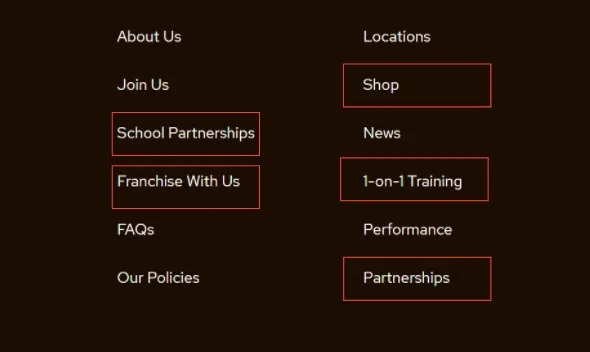
Strategy
We prioritized initiatives with the highest causal link to qualified demand and index recovery under tight budget constraints. The plan concentrated on:
- Local page primacy: refactor and differentiate every location page with unique titles, descriptions, and content; remove duplication; ensure fast crawl-to-index through GSC.
- Architectural simplification: eliminate redundant sections like a duplicative “Academy” directory, streamline internal linking, and focus navigation around core user journeys - find a local academy, view schedule, book.
- Technical debt paydown: fix timeouts, redirect chains, broken resources, and implement schema.org to clarify entity and page types.
- Content fit for AI Overviews: publish deeper information assets that give users a reason to click through even when an AI Overview summarizes basics.
- Link equity restoration: pause acquisition during the tightest budget months, then restart to regain momentum once the groundwork and content were ready.
- Data-led prioritization: allocate effort by regional demand, organic potential, and approval readiness to de-risk the organizational barrier.
Execution
We executed in sprints, sequencing tasks to remove blockers first and compound gains as content and links restarted.
Technical SEO and index recovery
We eliminated timeouts, shortened or removed redirect chains, fixed broken resources, and implemented structured data on key templates. Once crawlability and rendering stabilized, we queued priority pages for reindexing and monitored coverage daily in Search Console.
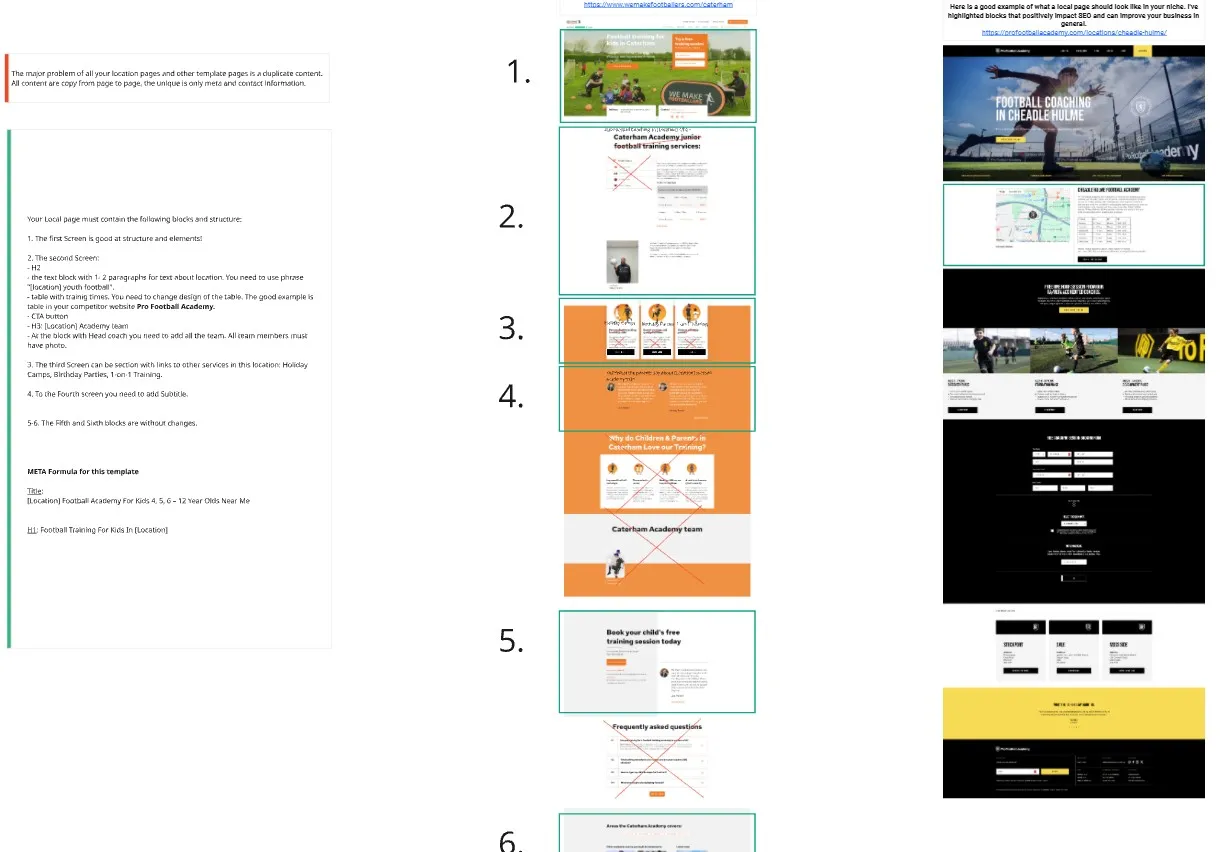

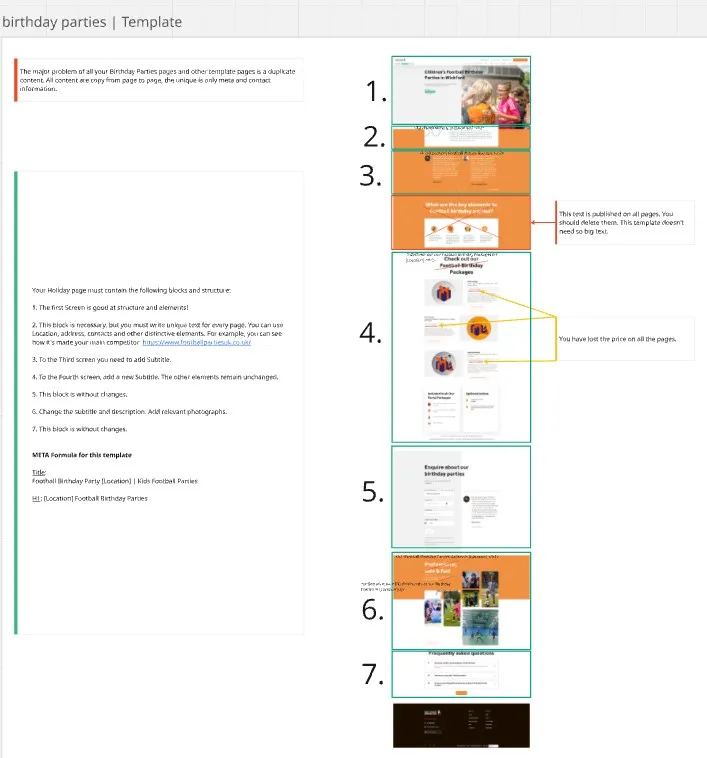
Architecture and internal linking
We removed the duplicative "Academy" directory that overlapped with "Location", consolidated signals to canonical local pages, and rebuilt internal links so each local page connected directly to core commercial paths like booking and schedules. This reduced cannibalization and clarified relevance.
Local page optimization
We created a rules-based system to generate unique titles and descriptions across all local pages, then manually rewrote priority locations with the highest potential. We refreshed copy to include local context and made CTAs and booking paths prominent. All updated pages were resubmitted for indexing.
Content for AI Overviews
We reworked information articles that were most exposed to AI Overviews, shifting from short summaries to deeper, structured content that offers new value beyond a two-sentence overview. Where possible, we localized topics to drive intent closer to conversion.
Link profile recovery
Acquisition paused for more than six months due to budget limits, during which the site lost roughly 15% of backlinks. After technical stability and content readiness, we restarted link building in late May to early June. Referring domains began to climb again, supporting visibility improvements.
Analytics and tooling
We relied on Google Search Console, Google Analytics 4, Ahrefs, Semrush, Screaming Frog SEO Spider, and occasional SurferSEO audits. A Looker Studio dashboard provided real-time visibility for the client with vetted data directly from Google sources.
Live reporting: Looker Studio dashboard
Before benchmarks
To baseline performance and set priorities we captured "before" snapshots across search visibility, traffic, and conversion signals. These framed the work ahead and the risk of inaction.

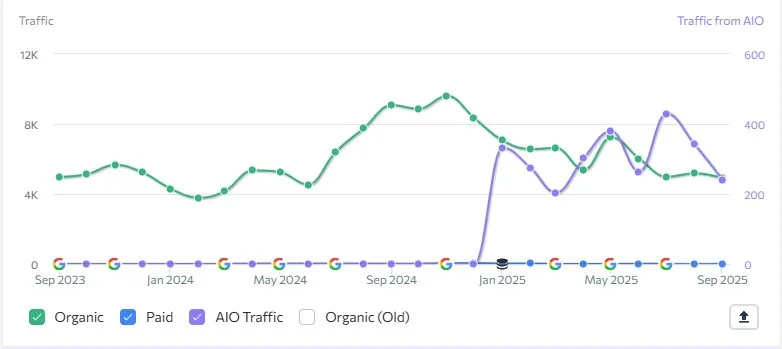
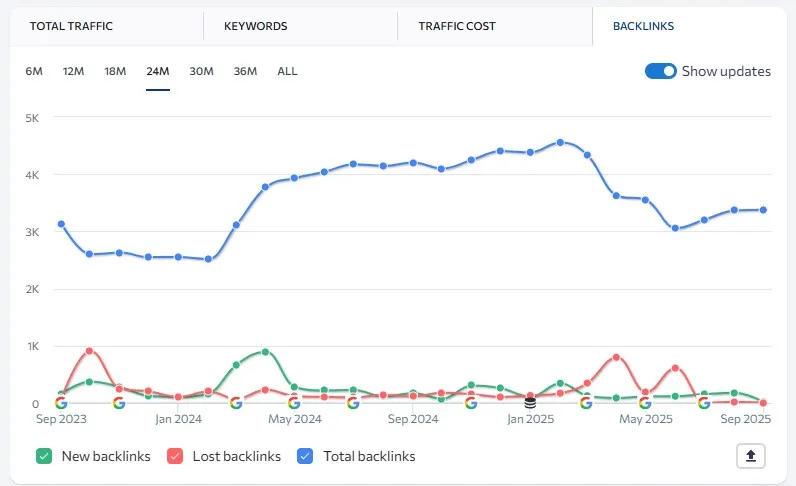
Results
We resolved critical technical blockers, restored crawling and indexing, and re-architected the site to align with user intent. As AI Overviews suppressed low-value informational clicks, our emphasis on local and commercial intent lifted the share of high-quality sessions and conversions. Key outcomes:
- Indexation restored - more than 1,000 URLs returned to search coverage after fixes and re-submission.
- Local pages re-optimized - unique metadata and copy increased impressions and CTR in high-demand regions.
- Link profile recovery - link building restarted in late May to early June, reversing a six-month decline and supporting improved visibility.
- Shift from volume to value - fewer informational visits but more bookings, calls, and contact views, surpassing 2024 levels of target events.
AI Overviews adaptation
We pivoted away from thin informational summaries to deep, structured articles and localized content. Even where AI Overviews answered basic queries inline, users had a reason to click for richer guidance. The traffic mix shifted toward commercial and local queries that lead to trial bookings.
Location example: Milton Keynes
We identified Milton Keynes as anomalously underperforming relative to demographic potential. The page used duplicated copy and generic tags, and it failed to rank in the top 20 for key local intents. We rewrote the content with local specifics, created unique metadata, removed redundant blocks, and re-submitted for indexing. Engagement improved alongside impressions and ranking on local terms.

After snapshots
Post-fix snapshots show recovered index coverage, improving local visibility, and renewed link momentum. While total visits were pressured by AI Overviews, the performance of commercial actions improved, which is the leading indicator for weekly attendance growth.


What changed and why it worked
- Problem - deep index gap and crawl waste on a 4,000+ URL site. Hypothesis - technical defects and duplication were capping discovery and cannibalizing intent. Action - fix timeouts, redirect chains, broken assets, add schema, simplify architecture, consolidate “Academy” into “Location”. Outcome - more than 1,000 URLs returned to index, clearer relevance by intent.
- Problem - low performance of high-potential local markets. Hypothesis - generic metadata and duplicated copy limited local relevance. Action - rules-based unique metadata, manual rewrites for priority cities, reindexing. Outcome - higher impressions and CTR for local queries, more qualified sessions.
- Problem - AI Overviews suppressing informational clicks. Hypothesis - deeper, structured articles and localized topics can compel post-overview clicks. Action - rewrite information assets for depth and utility, align them to local and commercial intent. Outcome - healthier traffic mix with more bookings, calls, and contact views despite lower informational volume.
- Problem - six-month link pause and declining backlinks. Hypothesis - once technical and content foundations were in place, restarting acquisition would restore momentum. Action - resume link building in late May - early June. Outcome - referring domains began to climb, supporting ranking and crawl frequency.
- Problem - dual approval bottlenecks stalling content for months. Hypothesis - strict prioritization plus PM-led alignment could unblock the highest-impact pages first. Action - PM cadence, data-led prioritization, phased rollouts by readiness. Outcome - content resumed on the most valuable sections without waiting for 100% of the backlog.
Lessons and next steps
This engagement reinforced several principles for SEO in multi-location services under budget and organizational constraints:
- Fix crawl and duplication before chasing volume - technical debt and cannibalization were the primary headwinds. Removing them created headroom for every other lever.
- Local pages are the backbone of commercial intent - unique metadata and copy by city are non-negotiable for multi-location brands.
- Design content for post-overview clicks - in an AI Overviews world, thin articles are sunk cost. Depth, structure, and local context are your edge.
- Sequence link building after foundations - link equity compounds best on stable, indexable, and intent-aligned pages.
- Operational alignment is a growth lever - when approvals stall, enforce a prioritization queue and ship the highest-value pages first.
Next steps we recommend:
- Personalization and segmentation: tailor onsite messaging by city, child age group, and program type. Use GA4 audience signals to surface age-appropriate CTAs and nearest-academy prompts.
- Location UX enhancements: integrate real-time calendars, capacity indicators, and instant booking CTAs on every local page to shorten time-to-trial.
- Structured data expansion: extend schema coverage to locations, events, products, and FAQs where they add actual user value.
- Automated monitoring: alerting on index coverage drops, new redirect chains, and page-level Core Web Vitals regressions.
- Sustained link velocity: continue measured acquisition with a bias toward regional media, grassroots sport communities, and education partners to reinforce local relevance.
With critical errors resolved, index coverage restored for more than 1,000 pages, and local intent now centered in the architecture, the growth vector has shifted from quantity to quality - more of the right sessions that become trials and weekly attendance. Continuing the program on this footing should compound gains market by market.

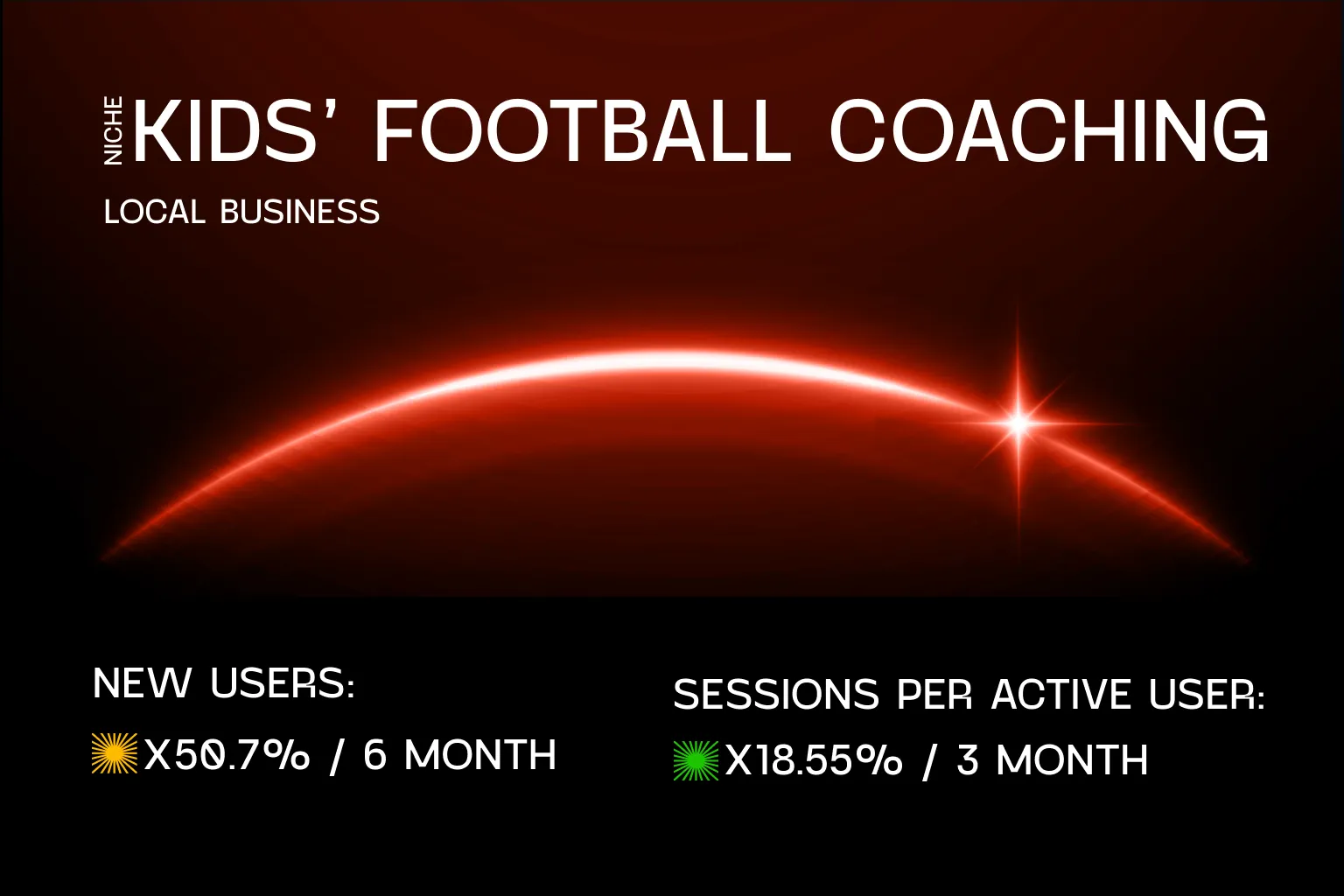



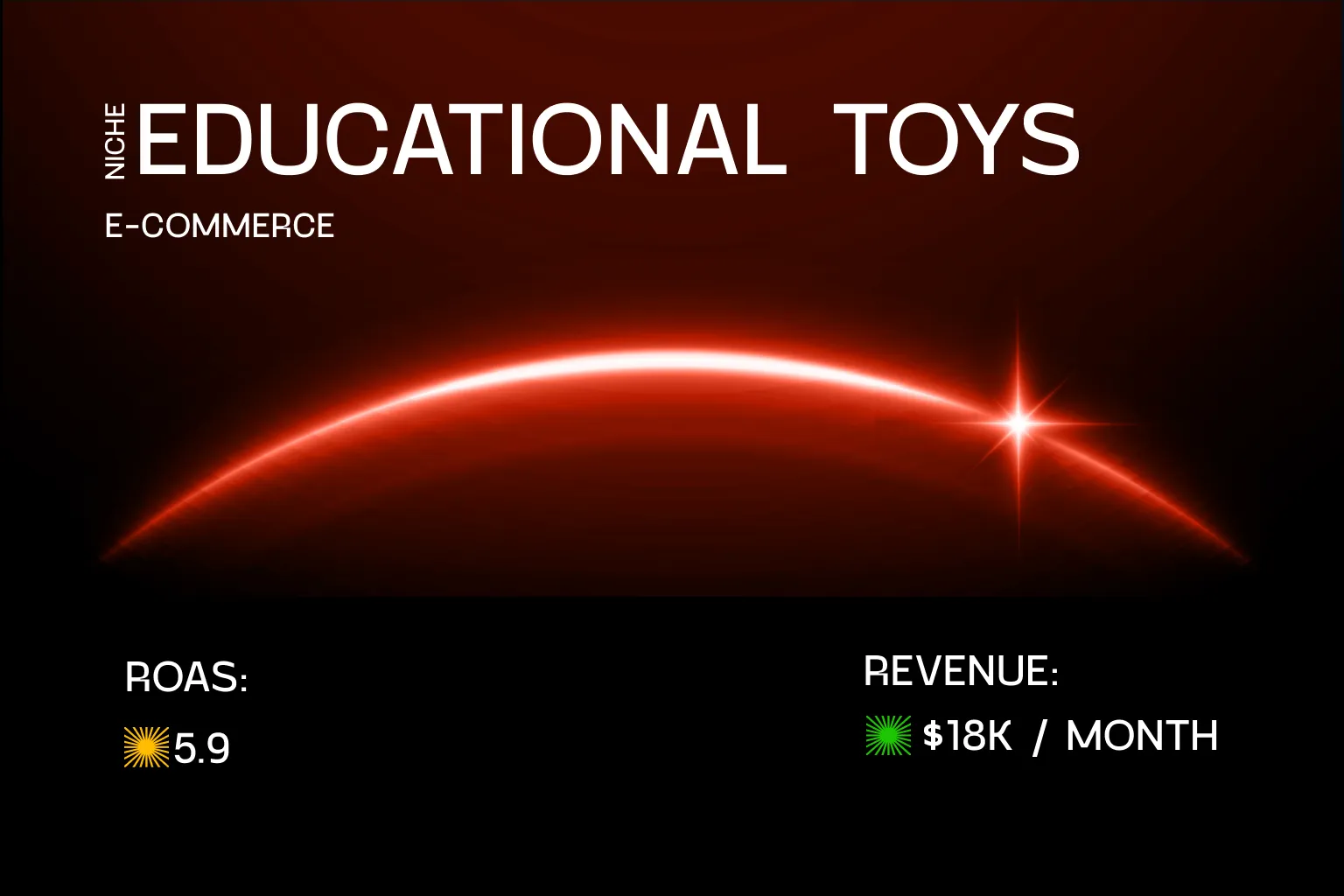

.svg)